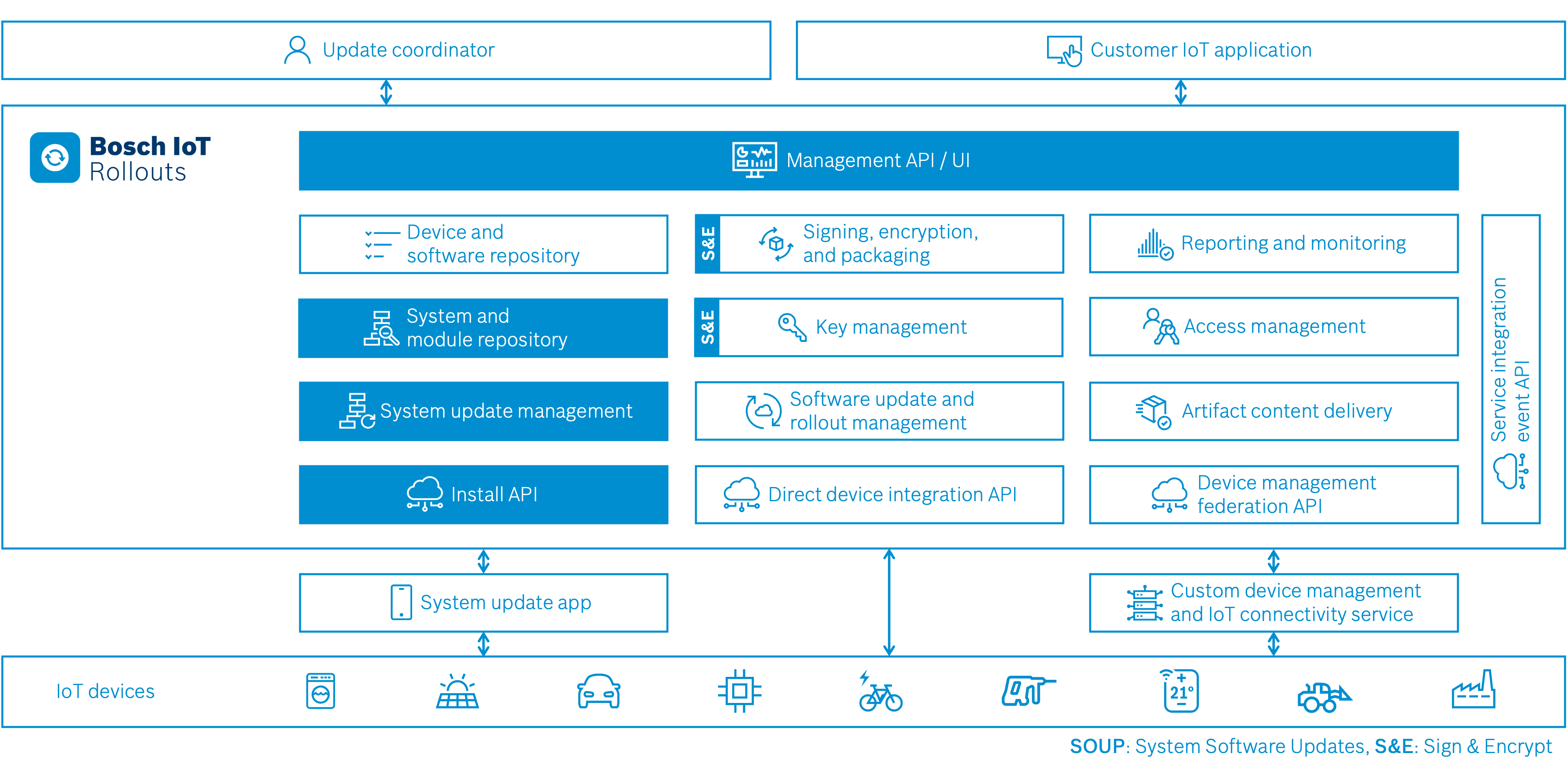Preface: Modules vs. Targets
In the context of a system devices are called a modules. This differs from the Bosch IoT Rollouts terminology where target is used to address not only a device, but also a complete system and particular parts of a device. Additionally: Modules can have a target representation if they are updatable, but can also exist only within the system as not-updatable modules.
System repository
- System management: Manage systems consisting of a gateway and multiple updatable and non-updatable modules.
- System identification: Algorithm and options on how a system is identified by a set of modules.
- System lifecycle: Handle creation of systems and modifications on the set of modules within the system.
Recipe management
- Recipe lifecycle: Differentiates between draft, release-candidate (limited access for testing), released and retired.
- 4-eyes principle: Require an additional approval for releaseing recipes.
- Signatures: Detect undesired modifications of released recipes.
- Recipe file: Customizable recipe transformation to a format which is understood by the system's gateway - default transformation/example:
System update management
- Recipe match: Identify the latest matching recipe for a specific system.
- Flexibility: Enable online and offline update scenarios.
- Update history: Track the latest known state of a system and the included modules, as well as not successful operations.
- Compliance: Concepts to support the delivery release-notes and retrieval of user consent
Interfaces
- Graphical user interface for managing systems and recipes.
- HTTP/REST APIs (with Swagger documentation), in particular:
- a user-facing API for managing and listing content,
- a device facing API exposing recipes and software to be installed on systems.
Authentication
- Bosch.IdM integration
- Bosch IoT Rollouts Auth - OAuth2 clients
- Bosch User Hub + Single Key ID
Scaling
- Build on and with the robust foundation of Bosch IoT Rollouts
- Scales from 1 to millions of devices
- Worldwide distribution of update (except countries where legal restrictions apply).
